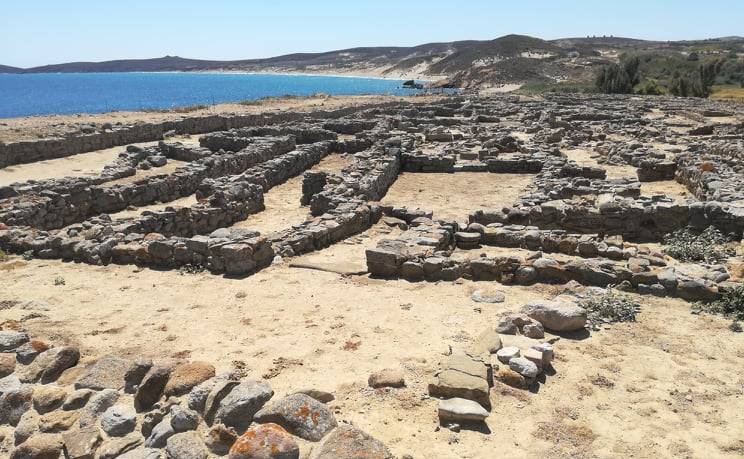Poliochne
Poliochne, often cited under its modern name Poliochni, was built in the beginning of the Neolithic period in the 4th or 5th millennia BC. It is situated directly across Troy on the east coast of the island. The town was excavated in 1930 by the Italian School of Archaeology at Athens revealing a large number of homes, a mansion, structures of the town and notably the “Parliament”, one of the most ancient evidence of democratic function of the ancient world.
It is considered to be the most ancient European town and emerged as the first trade port of Europe due to its favorable position and thanks to its processing and trading of metals.
The end of the town dates around 1600 BC after continuous seismic disasters.
Poliochne was named “Eptapolis”, as seven consecutive towns in seven consecutive layers were excavated. According to the findings each town was more advanced from its predecessor.
| MONDAY | 08:30 - 15:30 |
| TUESDAY | CLOSED |
| WEDNESDAY | 08:30 - 15:30 |
| THURSDAY | 08:30 - 15:30 |
| FRIDAY | 08:30 - 15:30 |
| SATURDAY | 08:30 - 15:30 |
| SUNDAY | 08:30 - 15:30 |
| MONDAY | 08:30 - 15:30 |
| TUESDAY | CLOSED |
| WEDNESDAY | 08:30 - 15:30 |
| THURSDAY | 08:30 - 15:30 |
| FRIDAY | 08:30 - 15:30 |
| SATURDAY | 08:30 - 15:30 |
| SUNDAY | 08:30 - 15:30 |







